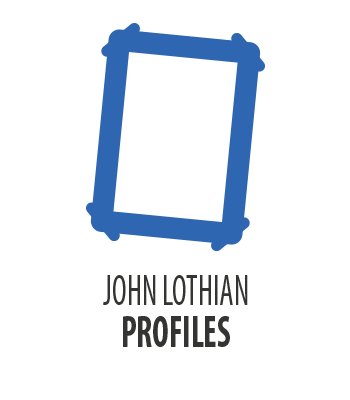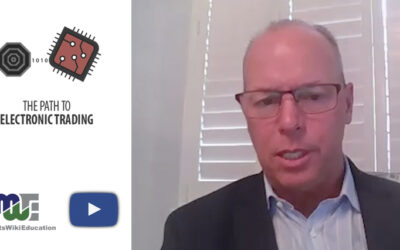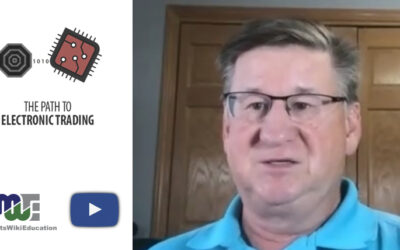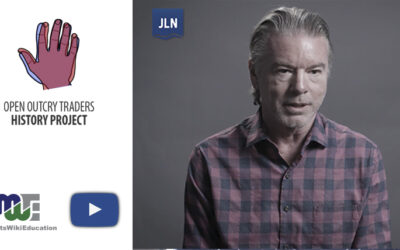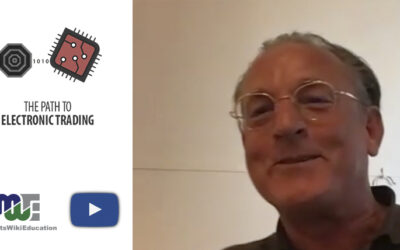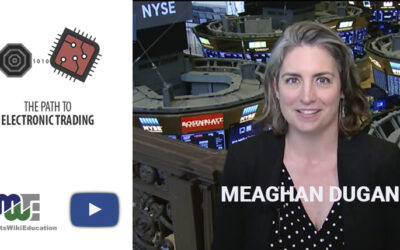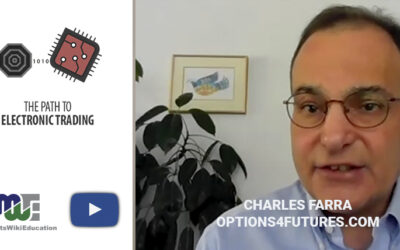VETERAN EXCHANGE EXECUTIVE MOVED FROM LIFFE TO EUREX AMID HISTORIC BATTLE FOR THE BUND
Brendan Bradley had a front row seat for the major exchange battles between open outcry trading and electronic trading after starting at the London International Financial Futures Exchange (LIFFE) in the 1980s and then moving to DTB in the mid-1990s. While there he saw the German Bund contract battle that shocked the global derivatives trading world and then later witnessed the competition between Eurex and the Chicago Board of Trade (CBOT) that he said ultimately led to the global leading exchange’s demise.
Bradley shared a historic overview of the development of markets in Europe as electronic trading developed for The Path to Electronic Trading from John Lothian News’ MarketsWiki Education video series.
It seems the place to start your career at a European exchange is as a pit observer. Brendan Bradley did exactly that at LIFFE during the open outcry era starting in June of 1987, a few months before he would be baptized by fire with Black Monday and the 1987 stock market crash in October.
During that time, Bradley was observing the LIFFE’s U.S. Treasury bond and Eurodollar futures pits, which saw incredible volatility as they did not have price limits and the primary markets in the U.S. had reached their price limits.
The volume that London saw during the crash in bonds and Eurodollars was a factor in the CBOT and Chicago Mercantile Exchange moving their opening from 8 AM to 7:20 AM to help capture some of this volume.
When LIFFE was looking to diversify its product offering and introduced the German Government Bunds, Bradley said no one realized how big that market would grow. Soon after the Bunds began trading in London, German unification brought huge amounts of government bond issuance and fueled more business on the LIFFE trading floor.
There was no competing German exchange at the time the Bunds launched. The Deutsche Terminbörse (“DTB”) would not start until 1990 and its initial focus was on 14 equity options and the DAX, Bradley said.
DTB did offer a bund contract in 1991, but LIFFE enjoyed first mover advantage in the contract. However, Bradley said in 1993, German banks started to offer market maker support for DTB bunds, and it was not too long before the German exchange had 25 to 30% market share of the DTB and LIFFE volume.
The Matif, a French floor-based derivatives market, was undergoing structural changes in the early 1990s as it merged with the French stock exchange. It was looking to extend trading hours beyond floor-based trading and joined the Globex Alliance with the CME.
LIFFE missed an opportunity to protect its bund dominance by not offering a five-year product, the bobl. DTB established a five-year bobl future, which allowed it to offer more of the German yield curve for traders. LIFFE was focused at the time at extending its products at the 10-year maturity into Italian and Spanish debt products.
The Investment Services Directive was issued in 1993, providing a regulatory framework for securities firms to be allowed to operate at the European level and allowing exchanges to offer trading screens in foreign countries. DTB put screens across Europe, in the U.K. and in the U.S., which greatly expanded its customer breadth.
It was then, Bradley said, that Eurex took the bunds from LIFFE and shocked the world. It was also then that Bradley made a move from LIFFE to Eurex. He would live in Frankfurt, but be in London every week to promote the exchange. From 1996 to 1998, Bradley said he looked for the Achilles heels of LIFFE for Eurex to expand their products.
Eurex benefited from the introduction of the 2-year Schatz contract to complement its yield curve offering and the preparations for the introduction of the Euro in 1999. There were many cross border bond transactions, anticipating the Euro, which would see the Bund as the stabilizing and continuing presence. This helped make the German yield curve the focal point of the market and ended the battle of the Bund. Eurex had won.
In 1998 Deutsche Boerse and the Swiss Exchange combined their derivatives exchanges, DTB and SOFFEX, and formed Eurex.
Eurex then focused on index and equity markets.
Bradley enjoyed good friendships in the London market while Eurex was competing with LIFFE, but he said there were remarks about whether he should be careful walking down dark alleyways, fearful of London floor traders.
LIFFE was a hugely successful organization, Bradley said, but may have been complacent as it tried to hold on to what it had. Looking to technology to expand its business, LIFFE introduced handheld devices to aid trading in the pits. LIFFE did not recognize that the markets were heading to fully electronic trading.
One issue was the structure of the exchanges. LIFFE was a member organization and sometimes the members had competing interests with the exchange management. However, Bradley said he would sometimes find vocal floor members of LIFFE were also headed to Frankfurt to become members of DTB
At the end of 1997 the DTB Bund volume reached a 52% market share heading into the contract rollover at the end of the year. After the first two rolls of 1998, the move from LIFFE to DTB was complete, Bradley said.
With the Euro on the horizon, there was a convergence of business coming together for Eurex. With the Bund battle won, Eurex had credibility to offer more equity index products. By the end of 1998, Eurex would surpass the Chicago Board of Trade and become the largest derivatives exchange in the world.
The Euro-Stoxx index futures became a huge success, even bigger than debt futures.
When Bradley joined DTB in the mid-1990s, there was a small team in place, similar to the start of LIFFE Bradley had experienced.
Bradley was part of the team from Eurex that went to Chicago for the a/c/e alliance in which the CBOT used the Eurex platform to expand its electronic trading.
At the same time, LIFFE resurrected itself as an electronic exchange with a focus on the short end of the yield curve. The LIFFE Connect trading platform was a new platform that eventually was adopted by the CBOT after it dropped its deal with Eurex.
In 2000, Jorg Franke decided to retire from Eurex. The job did not go to Franke’s associate Andreas Preuss; instead Eurex brought in outsider Rudy Fersha to head Eurex. This changed the dynamic of the relationship between Eurex and the CBOT, as Franke had a good relationship with the CBOT leaders, while Fersha was more aggressive.
When the CBOT decided to drop the Eurex platform for LiFFE Connect, Eurex decided it was open season and launched its own U.S. futures exchange, Eurex US.
Eurex believed, Bradley said, that was the opportunity to duplicate its success in taking the Bunds from LIFFE by taking the U.S. Treasury complex from the CBOT.
Bradley was focused elsewhere. With the help of consultant John Harding and Eurex’s Randolf Roth he wrote a white-paper suggesting Eurex should be looking instead at the NYMEX and the WTI market rather than making a frontal assault on the CBOT’s Treasury complex.
It was the successful lobbying by the CBOT that delayed the start of Eurex US. However, the failure of the new exchange could be traced to the many catalysts that helped Eurex in its battle with LIFFE not being present for its competition with the CBOT.
Ultimately, the competition from Eurex US did lead to the demise of the CBOT as it moved its clearing to the CME when it migrated its trading from Eurex’s fixed income-friendly electronic trading platform to LIFFE Connect. The CBOT’s open interest moving to the CME clearinghouse later contributed to the CBOT merging with the CME to form the CME Group, Bradley said.



